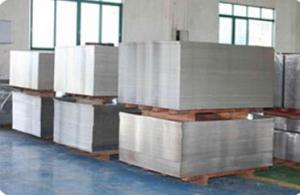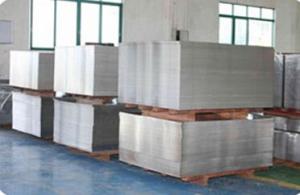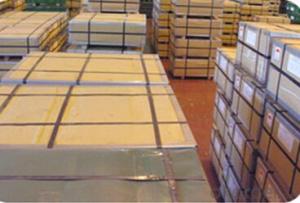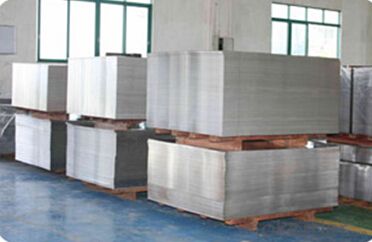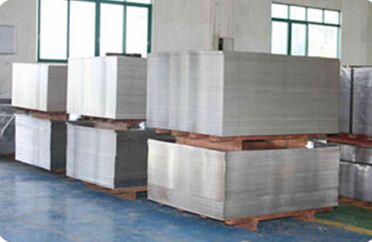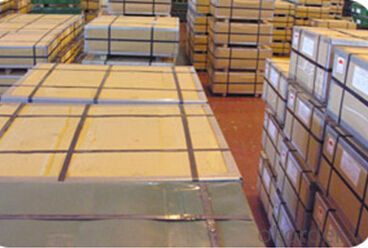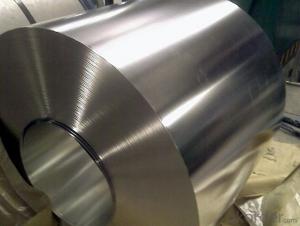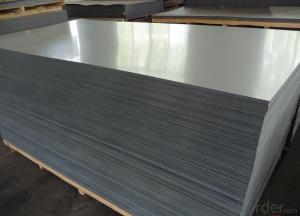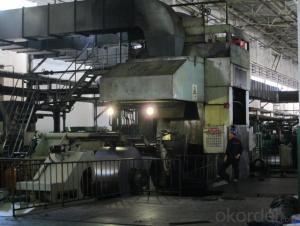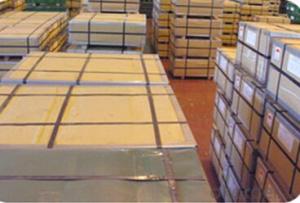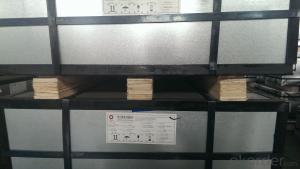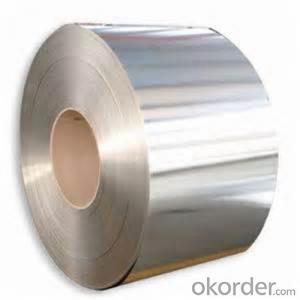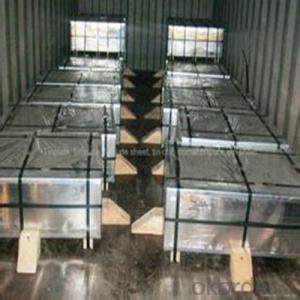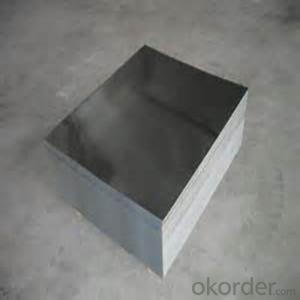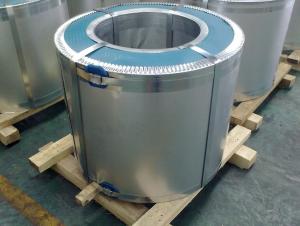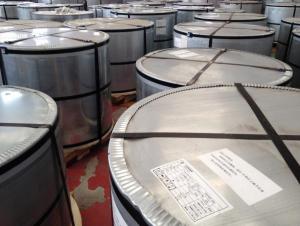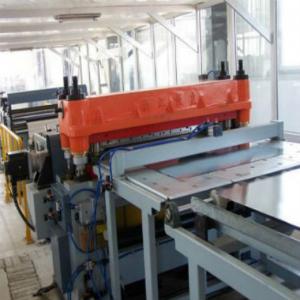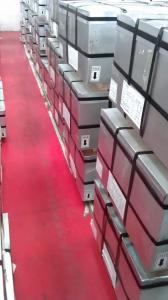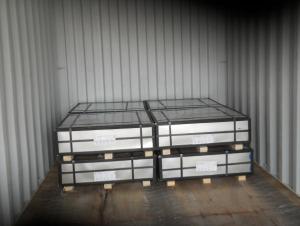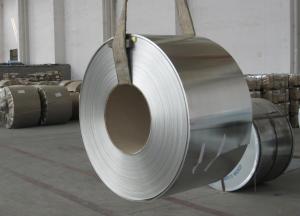Prime Quality TFS for Gerenal Cans Use
- Loading Port:
- Tianjin
- Payment Terms:
- TT OR LC
- Min Order Qty:
- 25 m.t.
- Supply Capability:
- 1000 m.t./month
OKorder Service Pledge
OKorder Financial Service
You Might Also Like
Specification
Prime Quality TFS for Gerenal Cans Use
1.Structure of Description
Prime Quality TFS for Gerenal Cans Use is one of the metal packing materials, which is widely used for making painting cans ,chemical package cans , electrical cable ,battery and metal printing etc.
2. Main Features
Steady and high quality
Fast shipment
Good experience for export work
For the surface, Plate uniform in thickness,uniform and smooth tin coating, without flaws,rusts,scratch,wave,nick of tin coating etc.
Price competitive
3. Images
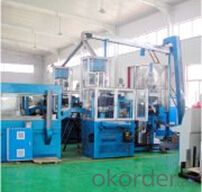
4. Specification
Standard : GB2520-2000 ,JIS G3303
Steel type : SPCC
Coating : 2.8/2.8
Surface: Bright, Stone ,
Thickness:0.31
Width :600MM~1000MM
Temper : T1~T5
Package: tinplate wrapped completely with an inner cover of plastic or waterproof papers with vorners protected with metal angels.
5.FAQ
A. What is the package of tinplate? (Referred as below)
For sheets, thin plastic film + rust-proof paper + metallic cover + metallic angles+ steel band strips + fumigated wooden pallet.
For coil, thin plastic film + rust proof paper + metallic cover + steel band strips + fumigated wooden pallet
B. The surface of tinplate could you supply?
Stone finish, Bright finish, Matte finish, Silver finish
C. What quantity is the minimum order of tinplate?
Usually, the minimum quantity is 25MT. For special case, consult with us.
D. Can it make to be BA or CA for annealing?
Yes, both can do with.
- Q: What are the main differences between tinplate and tinplate laminates in terms of design flexibility?
- Tinplate offers limited design flexibility due to its rigid nature, whereas tinplate laminates provide greater design flexibility as they can be combined with other materials, such as plastic or paper, allowing for more intricate and varied designs.
- Q: How does tinplate contribute to the conductivity of electrical components?
- Tinplate contributes to the conductivity of electrical components by providing a thin layer of tin coating on the surface of the component. This tin coating enhances the conductivity of the underlying material, such as copper or steel, by reducing the contact resistance and preventing oxidation. Tin is a highly conductive metal and acts as a barrier against corrosion, ensuring the longevity and reliability of electrical components.
- Q: What kind of metal material is tinplate? How much is the current price per ton?
- Tinplate originated in Bohemia (now Czech and Slovakia). The land has been rich in metal technology since ancient times, and know how to use water power in the manufacture of machinery, from fourteenth Century onwards began to produce tinplate. For a long, long time, it has been the main source of tinplate in the world. Tin was mainly used for making tableware and drinking utensils.
- Q: How to quickly distinguish tinplate and ordinary substrate iron?
- Tinplate is tin coil, measurement of tin content?. The base plate is a plain hard rolled coil, which is relatively hard without annealing.
- Q: How is tinplate affected by exposure to chemicals?
- Tinplate is typically resistant to corrosion and can withstand exposure to various chemicals without significant damage or reactions. However, certain aggressive or highly acidic chemicals may cause corrosion or tarnishing on the tin coating, leading to a potential degradation of its protective properties. Therefore, the extent to which tinplate is affected by exposure to chemicals largely depends on the specific nature and concentration of the substances it comes into contact with.
- Q: How does tinplate contribute to the performance of ammunition?
- Tinplate contributes to the performance of ammunition by providing a protective coating that prevents corrosion and oxidation of the metal components, ensuring the ammunition remains reliable and functional. The tin coating also reduces friction and assists in smooth feeding and extraction, enhancing the overall performance and reliability of the ammunition in firearms.
- Q: How is tinplate formed into different shapes?
- Tinplate is formed into different shapes through a process called metal stamping or deep drawing. The tinplate sheet is fed into a machine where a die and punch press it into the desired shape. The pressure exerted by the punch forces the tinplate to conform to the shape of the die, resulting in the formation of various shapes such as cans, containers, or lids.
- Q: Can tinplate be used for gift packaging?
- Yes, tinplate can be used for gift packaging. It is a versatile material that offers durability and can be easily shaped into various sizes and designs. Tinplate also provides a visually appealing and premium look, making it an excellent choice for gift packaging.
- Q: How does tinplate affect the overall weight of packaging?
- Tinplate has a significant impact on the overall weight of packaging as it is a lightweight material. It allows for the production of durable and sturdy packaging solutions while maintaining minimal weight, resulting in reduced transportation costs and environmental impact.
- Q: What are the differences in the corrosion behavior of two ferrous iron products?
- Tinplate is a tin covered with tin, it is not easy to rust, also known as tin iron. This kind of galvanized steel in a long time Chinese called "tin", some people think that the tin plate cans was made from the Guangdong province of Macao (English Macao readable if imported, tin) so called "tin".
Send your message to us
Prime Quality TFS for Gerenal Cans Use
- Loading Port:
- Tianjin
- Payment Terms:
- TT OR LC
- Min Order Qty:
- 25 m.t.
- Supply Capability:
- 1000 m.t./month
OKorder Service Pledge
OKorder Financial Service
Similar products
Hot products
Hot Searches
Related keywords
